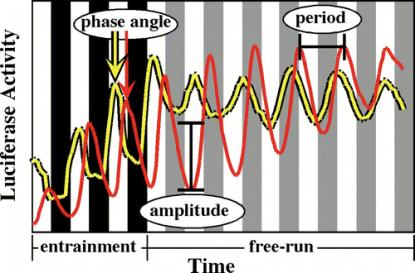A few decades ago an All-American Hero Ronald, the Gipper, Reagan saved America by firing a whole bunch on ungrateful flight traffic controllers. These experienced professionals were replaced with people who would accept more unpleasant working conditions and longer hours. Thank goodness he saved us from the union menace! Unfortunately, he had to cut back on some rather restrictive rest-time provisions and staffing rules. But luckily safety was not compromised. As long as everyone agreed not to fly into the airports after dark, all would be well.
It turns out that even non-union employees want to sleep at night.
If they had chosen to hire raccoons, things would have been different. Raccoons love shiny things, garbage and night time. So do bats, though their poorer-than-normal eye sight might compromise their ability to direct flights.
Raccoons and bats like to sleep during the day just as most humans like to sleep at night. Our physiology is locked in to the twenty-four hour cycle of this planet and there’s little we can do about it.
Plants of course also follow these daily rhythms. The ten commandment plant Maranta leuconeura massangeana lifts up its leaves at night as if praying to the almighty flying spaghetti monster.
When I first began hardening off my tomatoes I kept them in the mudroom where they’d get 6 or 7 hours of sun every day. In the evening, I’d find their leaves folded upwards. They too wish to honor the FSM. They also know when it’s time to bed down.
The study of circadian rhythms in plants is a great source of grant funding and lots of folks have made their careers working on it. I’m particularly impressed by the work done by this guy McClung (see reference below) up at some school in New Hampshire. He’s studied how specific genes are turned on or off based on the time of day. Most amazingly, one can “entrain” these to the standard sunrise and sunset times then put them in the dark and the genes will continue to follow the pattern. The graph below shows a few examples. These are two genes that he is following using a “reporter” protein called luciferase. That’s the enzyme that fireflies use to make light. He puts this in the plants and watches the plants flash. Pretty farkin cool.

When he gave a talk at UMass a few months ago he showed this movie of a sunflower. Sure the sunflower follows the sun as it passes overhead, but what’s really cool is that during the dark hours it repositions itself for dawn. Watch what happens right before the sun comes up.
What brought all this to mind? As I’ve mentioned I brought some chickens home because I felt we didn’t have enough organisms in the house (eucharyotes are still outnumbered by bacteria!). As the books directed me, I put them under a heat lamp to keep them nice and toasty. That all worked well, but it meant they didn’t sleep right as they didn’t have the cue to follow the standard light dark cycle. This made them agitated, which would have been fine if I had kept them in the basement. We chose to keep them in our room so they kept us up. Every morning at 3. They woke us up by cheeping and scratching. So I went and bought a lizard warmer: it screw sinto the same socket but doesn’t emit light. Suddenly I’m sleeping, and they’re happier. They’re happier because chickens are more like air traffic controllers than they are like raccoons. At least in terms of sleep habits.
reference:
CIRCADIAN RHYTHMS IN PLANTS
Annual Review of Plant Physiology and Plant Molecular Biology
Vol. 52: 139-162 (Volume publication date June 2001)
DOI: 10.1146/annurev.arplant.52.1.139
C Robertson McClung


